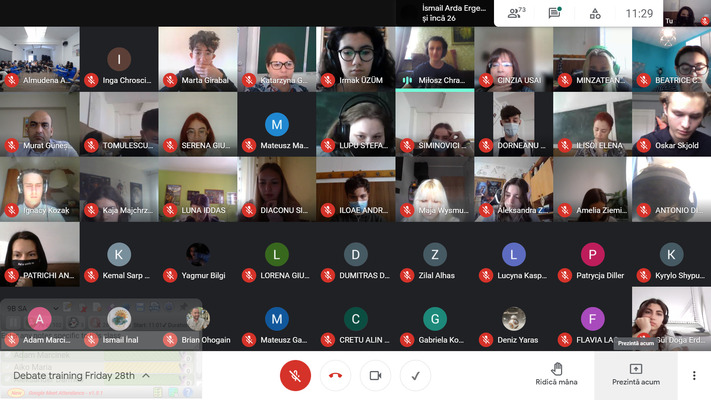The activities carried out during this short-term virtual exchange took the following format:
1. Getting to know each other: Two activities were carried out for the students to get to know each other. They first made a short video where they introduced their country and their school. After this, they were put into small groups of 8 students. Each group was given a list of questions which they asked each other with the objective of breaking the ice.
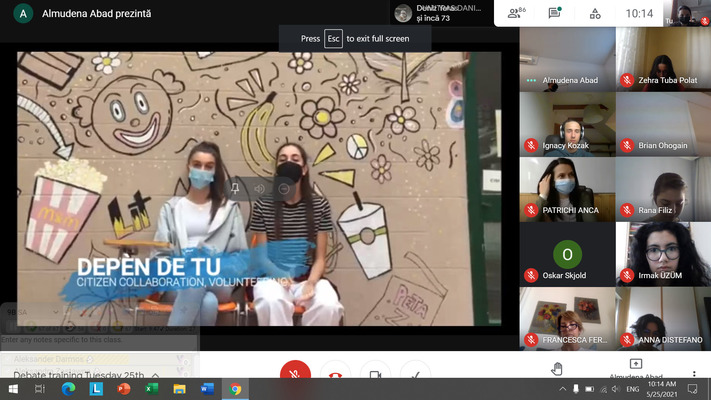
2. The Key to debating: The expert explained to the students how a debate is carried out and what aspects are to be considered.
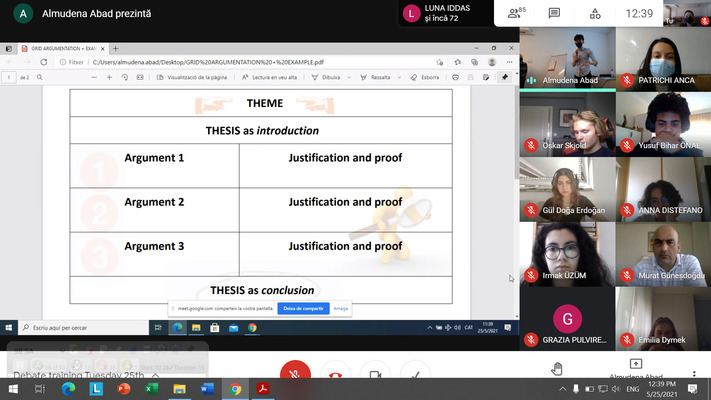
3. Techniques of Oratory: The expert explained what skills are involved in oratory. A practical activity was done by the students and after the results were shared by the five schools.
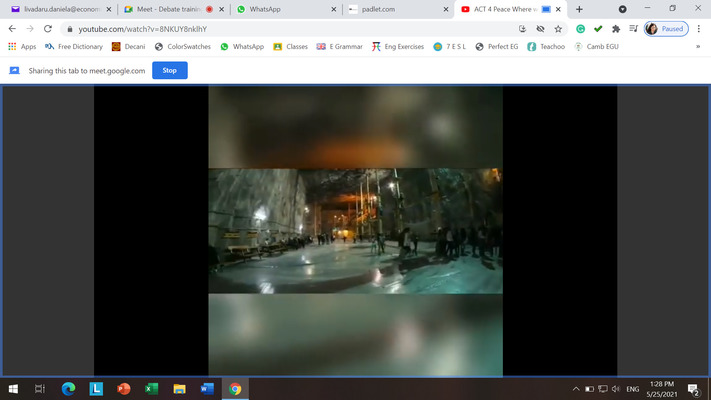
4. How to construct a speech: Students were given an example of how to construct a speech and along with worksheets each member country put the students into groups where they prepared a speech. The results were shared among all members.
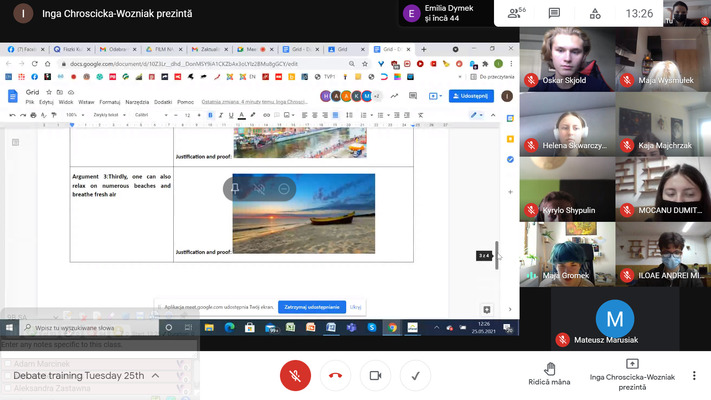
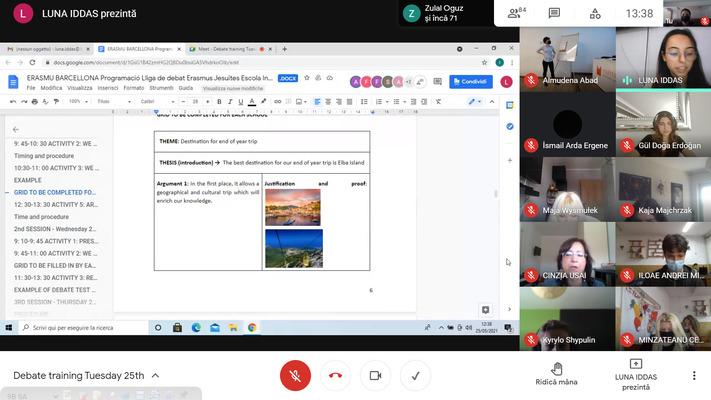
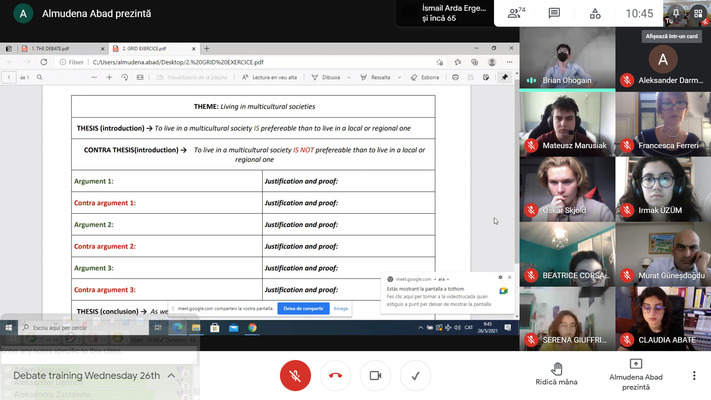
5. Construction of speeches for debate league: Students were given the topic that will be used in the subsequent debate leagues. “Living in a multicultural society is preferable to living in a monocultural society”. In groups, they prepared their arguments for and against. These same arguments were used by them in the internal debate league and in the international debate league.
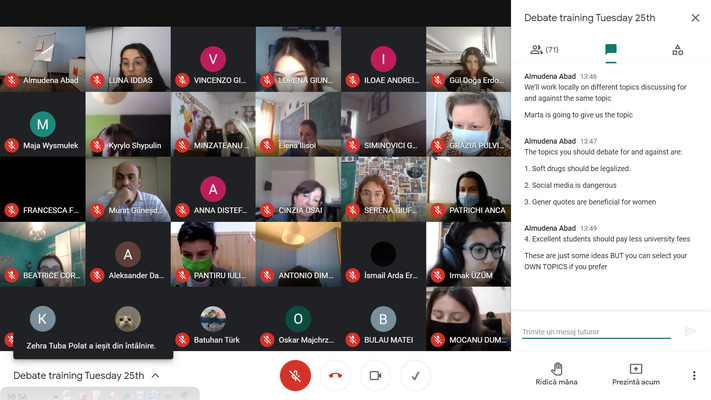
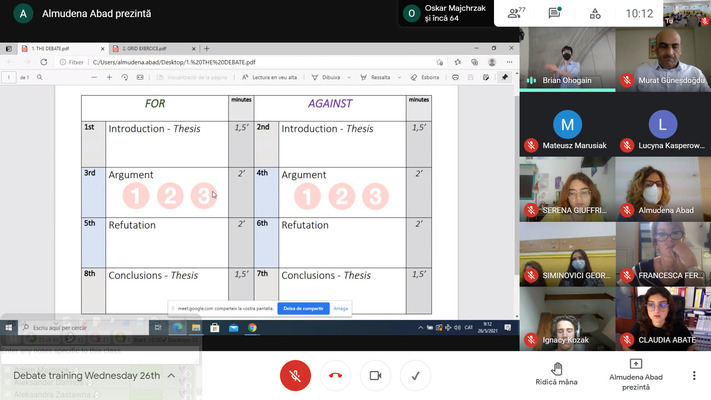
6. Internal debate league in each school to find final representatives: Each member school organized an internal debate league following the instructions of the trainer. Each debate team had the possibility to debate three times, to exercise argumentation and counter-argumentation, even switching roles inside the team. The idea was that students would debate twice in one motion and the third time they must debate the opposite motion. During this internal debate league, the teachers in each member school needed to choose eight students.
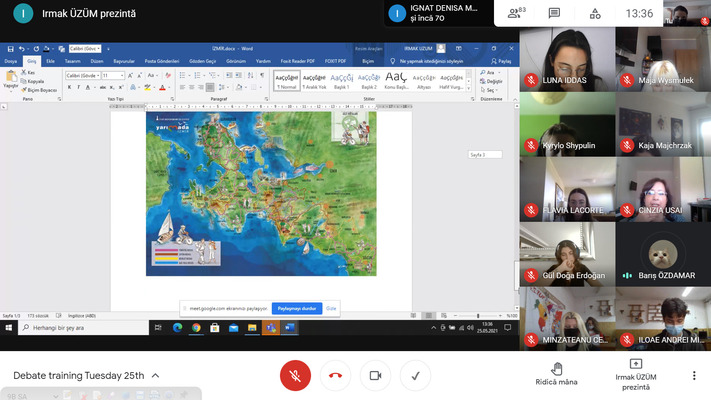
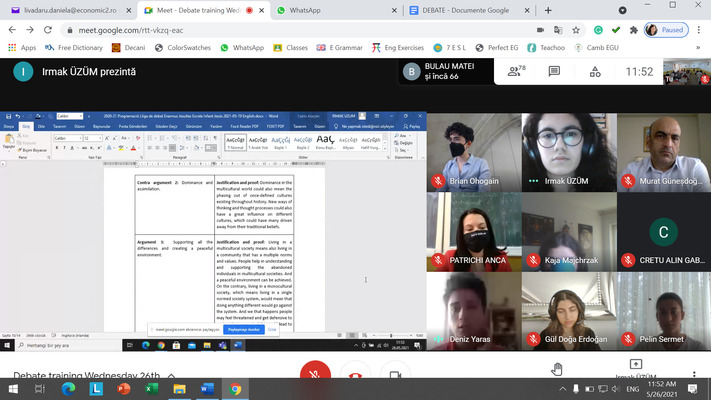
7. Debate league between all members of the project: From the eight-student representative of each school (16 in the case of the host as it had the largest number of participating students), 48 students were randomly placed in 8 teams. They were given time to prepare the debate together. They were also given the motion they were going to debate. Four debates were carried out among the 8 teams. From those four debates, the two best teams were chosen by a jury of the teachers. These two teams went against each other in the final debate.
